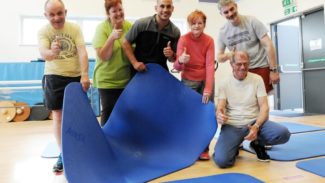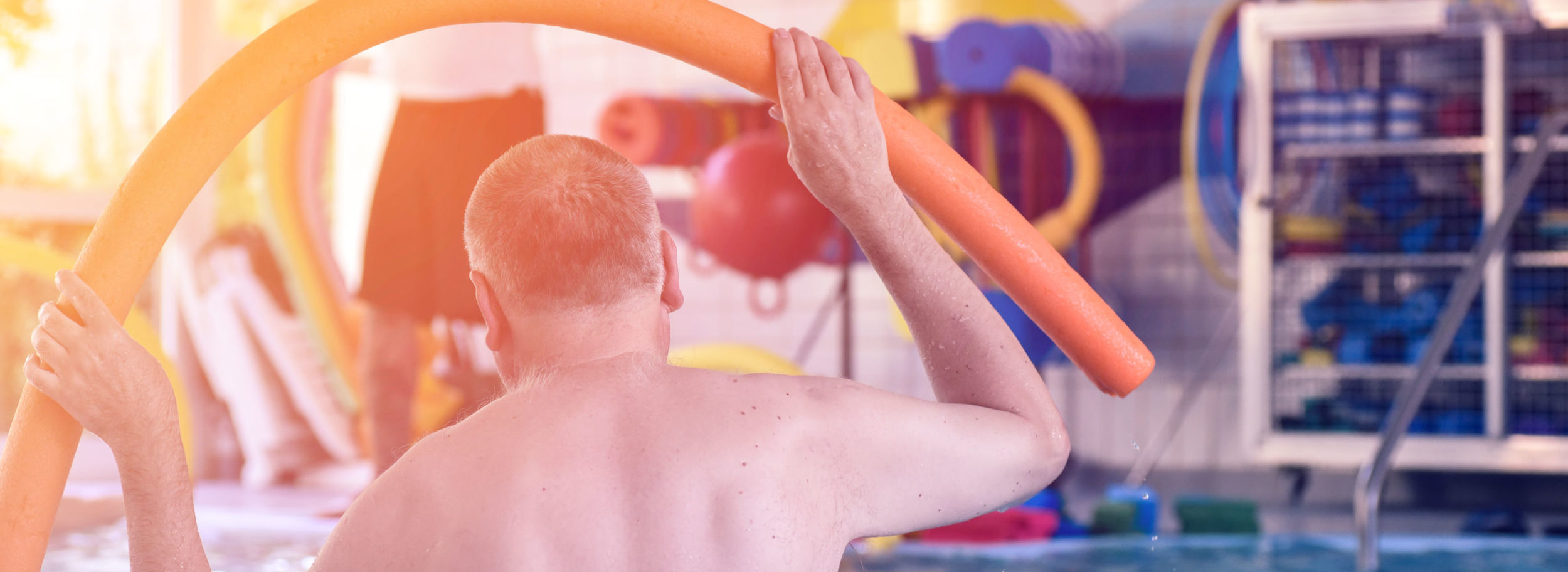
NASS Branches
Exercise in a friendly and supportive environment with NASS
Read more
Why hydrotherapy is important and how you can benefit
This information is for anyone with axial spondyloarthritis, including people with ankylosing spondylitis.
The main issues associated with axial SpA are stiffness, pain, risk of developing a stooped posture and fatigue. Exercising in water helps with all these problems:
When you live with axial SpA, moving can be painful so it’s tempting to stay still. When you move less, your muscles become weaker, your joints stiffen, you become less fit and your balance is less reliable.
When you exercise on land you have to work against gravity. In water there is another force, which doesn’t pull you down like gravity does, but pushes you up. This force is called up thrust and it actually helps us move. Your body feels lighter.
In waist deep water you weigh around half of what you weigh on land.
With less strain on the joints, you can exercise more without pain and without doing damage to the joints. Because you can work longer and harder, fitness can be built up again.
The water provides shock absorption and makes aerobic exercise safer and more enjoyable.
The viscosity or thickness of the water as well as the turbulence, the buoyancy and the drag effect can be used as a resistance to help strengthen muscles. The effect of buoyancy can be enhanced by using different floats.
The water temperature in hydrotherapy pools is usually around 33-34 degrees Celsius – much higher than a swimming pool. The warmth of the water helps you to relax and tight muscles can be stretched more efficiently when they are relaxed.
If you have lung function problems you may find the pressure of the water on the chest and ribcage too much in deep water.
If you suffer with asthma or angina, always take your inhalers and sprays with you and leave them on the pool side, so they are there if you need them.
You will need to undergo a health screening before being allowed to take part in hydrotherapy which will be conducted by your physiotherapist.
The best option is your local NASS branch, where you can exercise under the supervision of your physiotherapist.
You can use your local swimming pool once you know the exercises, but the temperature of the water will be lower. Keep moving so you don’t get too cold.
Lots of health clubs have pools with nice warm water. They may be a bit expensive to join, but once you are a member, you can go every day.

Exercise in a friendly and supportive environment with NASS
Read more
Check out our YouTube exercise playlist
Watch